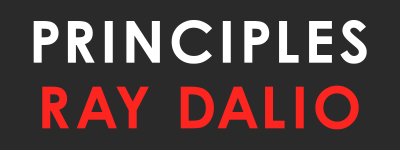This policy paper applies for CJRS claims for periods starting on or after 1 November 2020.
The closing date for claims up to and including 31 October remains 30 November 2020, using existing CJRS guidance.
All employees on an RTI submission on or before 19 March 2020 will be able to use the CJRS calculations as applied in August 2020 for reference pay and usual hours.
However, for new employers claiming and new employees hired between 20 March 2020 and 30 October 2020 the CJRS methodology will update the reference pay and usual hours to take account of the period covered by the extension.
For employees on fixed pay employed on or after 20 March 2020, the last pay period prior to 30 October 2020 provides the basis for calculation.
For employees on variable pay or hours, employed after 20 March, the average of tax year 2020 to 2021 up to the start of the furlough provides the basis for calculation.
For employees who were previously eligible for CJRS, the calculation rules will remain the same
The existing CJRS calculation of 80% of usual wages and of usual hours will apply to all employees who were eligible under CJRS even if a claim was not made in respect of that employee under CJRS to 31 October 2020.
Where an employee was not previously eligible for CJRS, the calculation will take account of updated reference periods. Full details of the calculation will be shared in guidance on 10 November 2020.
For claims between 1 November 2020 and 31 January 2021 employers will be able to claim a grant for 80% of usual wages up to a maximum government grant of £2,500 per month per employee for the time the employee spends on furlough. The £2,500 cap is proportional to the hours not worked.
The government will cover the cost of 80% of the salary of every eligible employee, up to a maximum government grant of £2,500 per month per employee for the time the employee spends on furlough.
Employers will need to:
- pay their employees for the time worked and the government grant for the time not worked;
- operate PAYE on behalf of their employees, as per CJRS
- pay employer National Insurance contributions and pension contributions for their employees on the full amount that they pay the employee, including any scheme grant
Employers will not be:
- required to contribute towards 80% of the employees’ usual wages for the hours not worked
- able to claim for employer National Insurance contributions or pension contributions
Employers can top up employee wages above the maximum salary threshold at their own expense.
Reference pay: calculating 80% of wages
If an employee was not previously eligible for CJRS, 80% of wages must be calculated for employees:
- on a fixed salary – 80% of the wages payable in the last pay period ending on or before 30 October 2020
- whose pay varies – 80% of the average payable between (these dates are inclusive) the start date of their employment or 6 April 2020 (whichever is later) and the day before theirCJRS extension furlough periods begins
80% of wages is capped at the maximum wage amount which will be calculated in the in the way it was for CJRS before the extension
Usual hours for an employee who is contracted for a fixed number of hours and whose pay does not vary according to the number of hours they work
If an employee was not previously eligible for CJRS, then usual hours for an employee who is contracted for a fixed number of hours and whose pay does not vary according to the number of hours they work, will be the contracted hours worked in the last pay period ending on or before 30 October 2020.
Usual hours for an employee who works variable hours
If an employee was not eligible for CJRS then the usual hours will be the average hours worked between (these dates are inclusive):
- the start date of the 2020 to 2021 tax year, (for example, 6 April 2020)
- the day before theirCJRS extension furlough periods begins
Example
Working out usual hours for an employee not previously eligible for CJRS
Sam has been employed by A Ltd since April 2020. A Ltd was not eligible to claim a CJRS grant for Sam. Sam is paid weekly. Sam has always been contracted to work a fixed number of hours per week (30 hours), and their pay does not vary according to the number of hours they work.
For the claim period 16 November 2020 to 22 November 2020, Sam’s usual hours will be 30 hours, being the number of hours Sam was contracted for on 25 October 2020, the end of the last pay period ending before 30 October.
How employers can claim under the CJRS extension
The extended CJRS will operate as the previous scheme did, in several respects:
- employers must report and claim for a minimum period of 7 consecutive calendar days
- employers will need to report actual hours worked and the usual hours an employee would be expected to work in a claim period
- for hours worked, employees will be paid by their employer subject to their employment contract and employers will be responsible for paying the tax and NICs due on those amounts
The claim period must start and end within the same calendar month. If the pay period includes days in more than one month. Each of those claims will need to be calculated separately. Claim periods cannot overlap, and employees claimed for will need to be included in each separate claim made.
An employer can make a claim in anticipation of an imminent payroll run, at the point they run their payroll or after they have run their payroll. There will be a short period when the legal terms of the scheme and system are updated. Businesses will need to claim in arrears for this period. There will be no gap in eligibility of support between the previously announced end-date of CJRS on 31 October 2020 and this extension starting 1 November 2020.
Employers will be able to claim from 8am on Wednesday 11 November 2020. Claims can be made:
- in respect of an employee for a minimum 7 day claim window
- in advance
- in arrears for the period from 1 November 2020 to 11 November 2020, from the week commencing 9 November 2020
Claims relating to November 2020 must be made by 14 December 2020. Claims relating to each subsequent month should be submitted by day 14 of the following month, to ensure prompt claims following the end of the month which is the subject of the claim. The closing date for claims up to and including 31 October remains 30 November 2020.
Grants payments are anticipated 6 working days after the first claims.
Agents who are authorised to do PAYE online for employers will be able to claim on their behalf.
Claims can be made from 8am Wednesday 11 November 2020.
Full guidance will include further detail on how to claim and will be published on 10 November 2020.
Interaction with other Coronavirus Job Schemes
The launch of the Job Support Scheme has been postponed because of national developments related to the coronavirus pandemic.
The Job Retention Bonus (JRB) will not be paid in February 2021 and a retention incentive will be deployed at the appropriate time. The purpose of the JRB was to encourage employers to keep people in work until the end of January. However, as the CJRS is now being extended to 31 March 2021, the policy intent of the JRB no longer applies.
Image by Elnur / Adobe Stock











Thanks!
Our editors are notified.